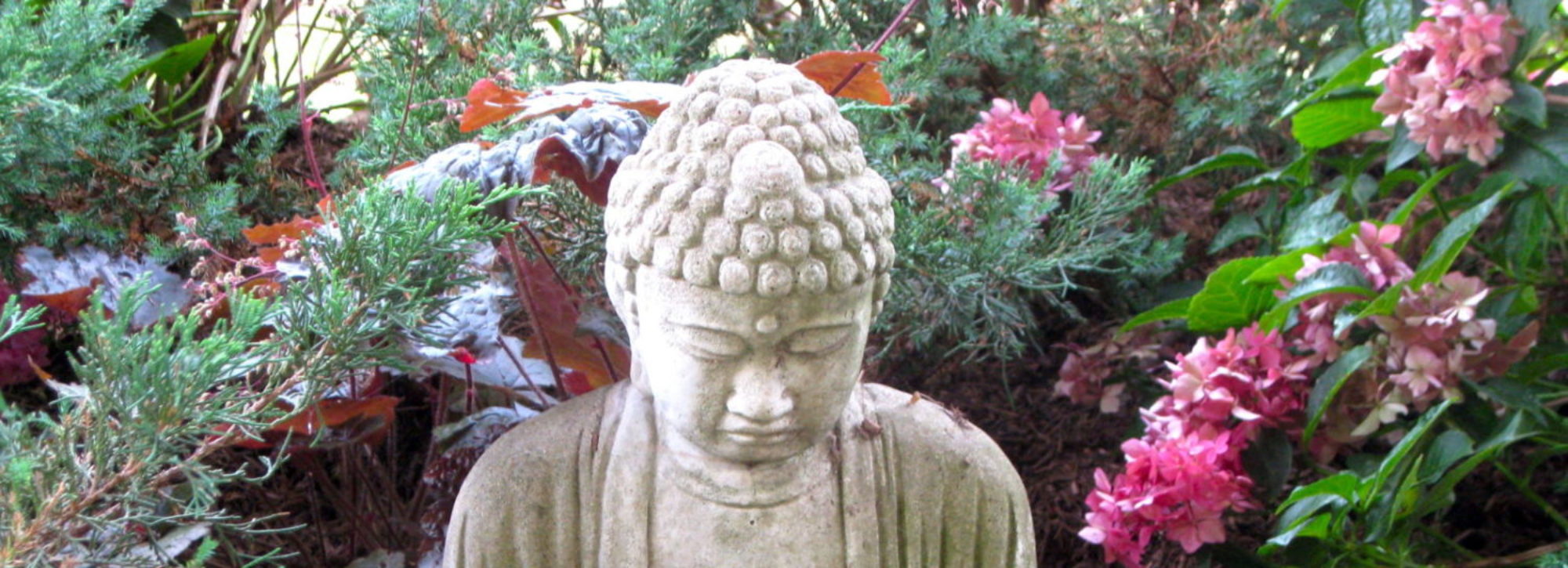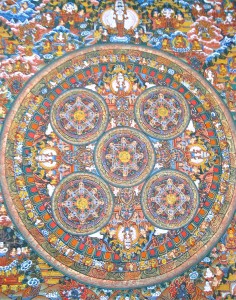What’s Buddhist About Buddhist Social Activism?
This is an excerpt from an article I wrote which appeared in the Fall 2004 issue of Turning Wheel
1) Buddhist practice is nondual. It allows no space of separation between self and other. The dichotomy of working on the self but withdrawing from the world, or working on the world but bypassing the self, is antithetical to Buddhism. Since everything is connected, when I change myself, I change the world; when I change the world, I change myself. How could it be otherwise?
2) Everything that happens happens right here, immediately, in one’s own experience.
This is true whether the happenings are bodily sensations and personal emotions, or the remembered images of Abu Ghraib prison, or one’s reactions to listening to President Bush on the nightly news. All of these are mental objects that call for an equal degree of mindful attention, wise reflection, and skillful response. All are part of Buddhist practice.
3) Buddhist practice is continuous. There is no dichotomy between the sacred and the profane; there is not one realm that belongs to Caesar and another that belongs to a deity. Nothing is excluded from Buddhist practice. We practice all the time, whether sitting on the cushion, talking with friends, shopping at the mall, or voting in the booth. Every moment is a moment of continuous, seamless practice. Social action is a realm of practice no different from meditation or sutra study.
4) Buddhist practice is universal. No thing is left out; no one is excluded. We apply our practice to all people: the good, the bad, and the ugly. We include animals and plants within our practice, too. We are not against anyone: we are not against soldiers, criminals, capitalists, landlords, Republicans. No one is left out of our caring and concern. We say, “May all beings be happy.” That is our practice.
5) We are not struggling against people but against processes: greed, aversion, and delusion. We work ceaselessly with these three poisons, whether they occur within us or within George W. Bush. We no more despise George Bush for his greed, aversion, and delusion than we do ourselves. George Bush is just a collection of the five aggregates, the same as we are.
The war in Iraq, for example, is the outcome of innumerable causes and conditions which include, but are not limited to: the history of British colonialism in Iraq; the ways in which modernity impinges on traditionally organized societies; the changing nature of the world order in the age of globalization and multinational corporations; the historic relationship between the Bush family and the house of Saud; the role Christianity played in helping George Bush overcome his drinking problem; the role that social class has played in shaping George Bush’s consciousness; the geopolitical consequences of the dependency of industrialized societies on petroleum; the greed of oil companies, and companies that produce the goods and services needed for war; Saddam Hussein’s sociopathic personality structure, which is itself a consequence of genetics and past experiences; the rise of neoconservative thought in reaction to the New Left of the 1960s; the post-9/11 fear of terrorism; and so on, ad infinitum. George Bush and Saddam Hussein did not create the war, but the karma of the world flows through their actions in an unbroken chain. We are here to be yet another influence in the great sea of causes and conditions. We are not here to control the world; no one ever does that. We are here to ceaselessly witness and ceaselessly practice. Our practice includes being present to suffering, being a friend to those forgotten, and being unafraid to speak our truth (with a small “t”) to those with power.
6) Buddhist practice is not overly attached to outcome.
When we sit on the cushion and we are not enlightened, we do not become discouraged and change our practice. When we demonstrate for peace and war breaks out, we do not become discouraged and change our practice. Not getting the outcome we want does not invalidate the value of working for peace. In her concept of the Four-Fold Way, educator, author, and cultural anthropologist Angeles Arrien (www.angelesarrien.com) urges us to 1) show up, 2) pay attention, 3) tell the truth without blame or judgment, and 4) be open, but not attached, to outcome. This is the dharma, in short. Buddhist practice is about being here, being mindful, and speaking truthfully, again and again, without discouragement. Practice is, as Suzuki Roshi once said, making one’s “best effort on the moment forever.” If one can be deeply present, like Avalokiteshvara, and see the suffering of the world, if one can show up with the intention to relieve suffering whenever one encounters it to the best of one’s abilities, if one can include every being within the circle of one’s care and compassion, and if one can avoid anger and disillusionment when suffering does not always abate despite one’s best efforts, then one is engaged in a social activism that also epitomizes Buddhist practice.


Hi there !
You have to know that it is totally pointeless to put a blurry picture in such a big size on the internet : blurry 2423 Á— 3069 – 5485 ko – jpg .
Big size are for sharp, neat, high res. pictures.
for the other ones, you should use smaller size.
if you dont know how to reduce your pictures, try this :
http://www.google.fr/search?hl=fr&safe=off&biw=1264&bih=554&q=how%20to%20reduce%20a%20picture&gs_sm=e&gs_upl=4638l12353l0l12635l23l22l0l8l8l0l780l3970l1.0.5.3.2.0.1l12l0&ie=UTF-8&sa=N&tab=iw
Other than this, your website is cool and your posts are great.
Have a wonderful day !
🙂
Sylvain,
I bow to your graphics expertise! Glad you liked the verbal content. The graphic on this page appears modest sized on my screen. Sorry the photo isn’t better — it’s the best I could manage to take of my favorite mandala in my personal collection. One day I’ll try to reshoot it with a better camera and better lighting.
Seth, is your original Turning Wheel article still available?
Hi Ben! Unfortunately not in cyberspace. Turning Wheel has discussed putting back issues in archived form on line, but so far has not done so.